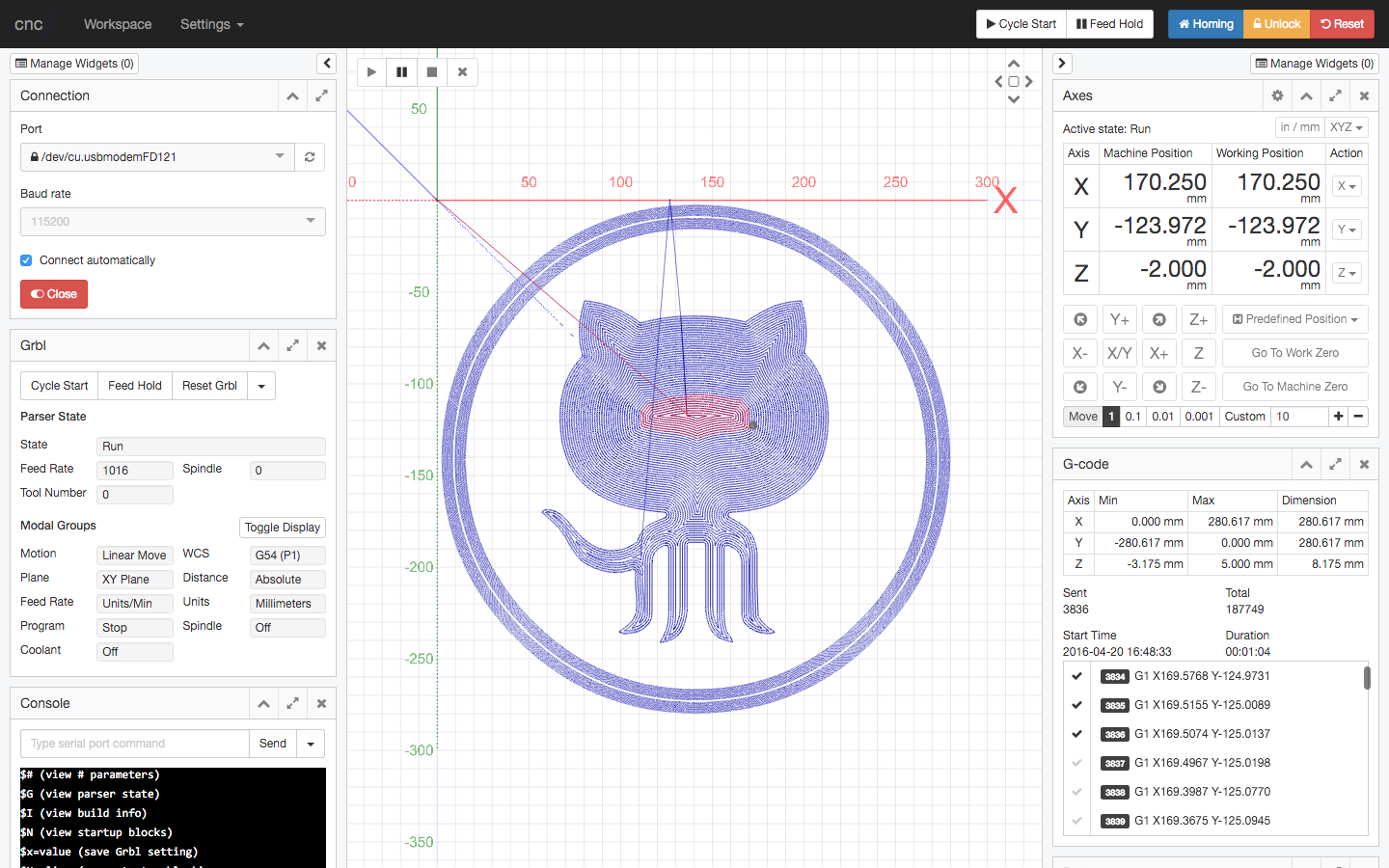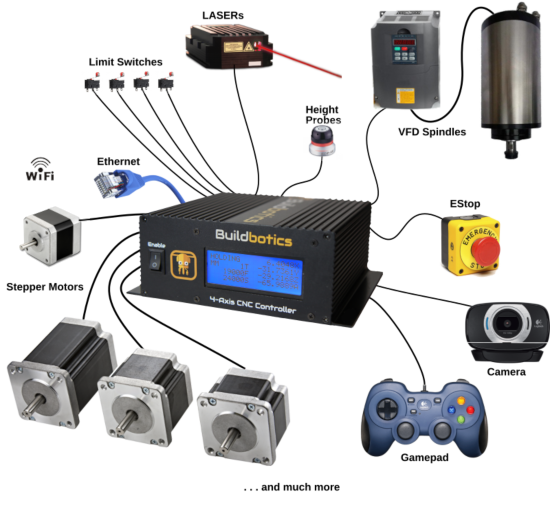
Adding to this, the official Raspberry Pi 7” display, and the Galil application program interface, this powerful trio form the foundation for an inexpensive but fully capable HMI that can be customized for any motion control application. With the arrival of the Raspberry Pi Foundation and its Raspberry Pi models, a small but powerful option arrived. There are many sources for HMIs and many can cost thousands of dollars. Many times HMIs are touch enabled allowing them to be placed on the production floor and used by technicians right by the machine.
GRBL CONTROLLER RASPBERRY PI FULL
These devices are used to allow a user to instruct a machine on what to do without the need of a full PC. An HMI or Human Machine Interface is needed in many motion control applications. This functionality can be easily expanded for more complicated machines, for example laser, waterjet, and plasma cutters.Figure 1: Photo of Touchscreen and Motion Controller So currently it is a fully functional controller for engraving and 3d printer machines. The P圜NC implementation supports 4 axises, 2 heaters, a PWM (Pulse Width Modulation) controlled spindle, cooling, end stop sensors, linear and circular (in 3 planes) interpolations.
GRBL CONTROLLER RASPBERRY PI CODE
Source code, wiring diagram and instructions for running the code can be found in the git repo.

Of course, Python’s performance is not that good, but on the other hand, modern ARMv7 processor performance is more than enough to run it. It can be developed with different languages, but Python is a very simple language that provides a great development experience. So, the sequence of pulses for axis stepper motors are generated in the memory, and then DMA sends them precisely.Īs for access to the processor registers, it’s implemented with the /dev/mem system device. And this copying process is clocked by the system clock and works completely independently from the CPU cores.

The solution uses DMA (Direct Memory Access) on the chip hardware module that just copies the buffer of GPIO states allocated in the RAM to the actual GPIO registers. The video below demonstrates the developed project with Python solution running on Raspberry Pi 2 with Linux: The hardware access layer (HAL) allows creating an implementation for almost any ARM SoC (System on Chip) / CPU with a suitable DMA module, but this is currently only implemented for Raspberry Pi. This is the first ever CNC machine controller implementation in pure Python (without dependencies or any C modules) for ARM-based Linux boards.

Modern ARM processors allow using high-level programming languages like Python to provide easy development, flexibility, and migration between hardware. Some of these approaches seem to be quite old-fashioned. And running projects like LinuxCNC requires adding special real-time features to the kernel. For example, Linux by default is not a real-time operating system. Typically, Computer Numerical Control (CNC) machine controllers are implemented in C or C++ and run on OSless or real-time operating systems.

Moreover, using modern tools opens a wide range of integration options with other cutting edge technologies, solutions, and infrastructures making the whole market more customer centric. As a result, it reduces the learning curve of CNC in general. Using modern architectures and popular languages like Python disrupts the whole industry allowing it to drastically shorten the time to market and decrease proof-of-concept efforts. Supporting legacy technologies and hardware is always expensive and time consuming.


 0 kommentar(er)
0 kommentar(er)
